A tropical wave had moved offshore Africa by August 25th. The system moved through much of the tropical Atlantic with minimal
development. As it approached the Leeward Islands, conditions aloft became more favorable for development, and a tropical
storm formed early on September 3rd. After moving west-northwest for much of its existence, the cyclone turned north
to the northeast of Puerto Rico and strengthened into a hurricane as it pulled northward ahead of an upper level trough.
After missing Bermuda to the east, Earl accelerated northeast while becoming larger as it phased with the upper level
trough. This occurred during its extratropical transition, and Earl became a hurricane-force low during the afternoon
of the 10th while slowing down, which allowed rainfall to pile up across southeast Newfoundland. Earl eventually
pulled away to the east-northeast, weakening as it moved north of the Azores on the 15th.
The graphics below show the storm total rainfall for Earl, which used rain gage information from National Weather Service River
Forecast Centers, National Weather Service Forecast Offices, information from Environment Canada statements, and CoCoRAHS.
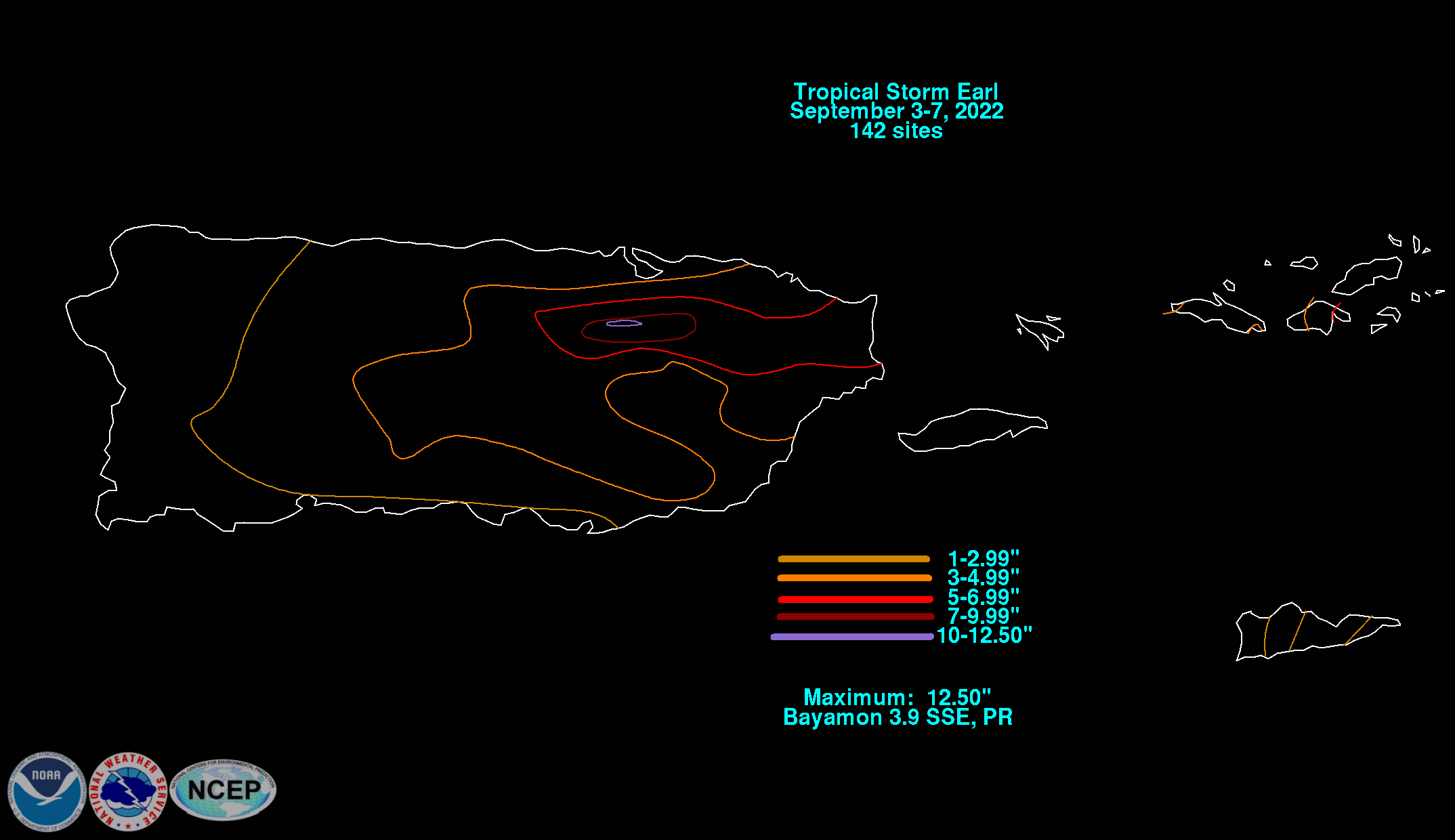 |
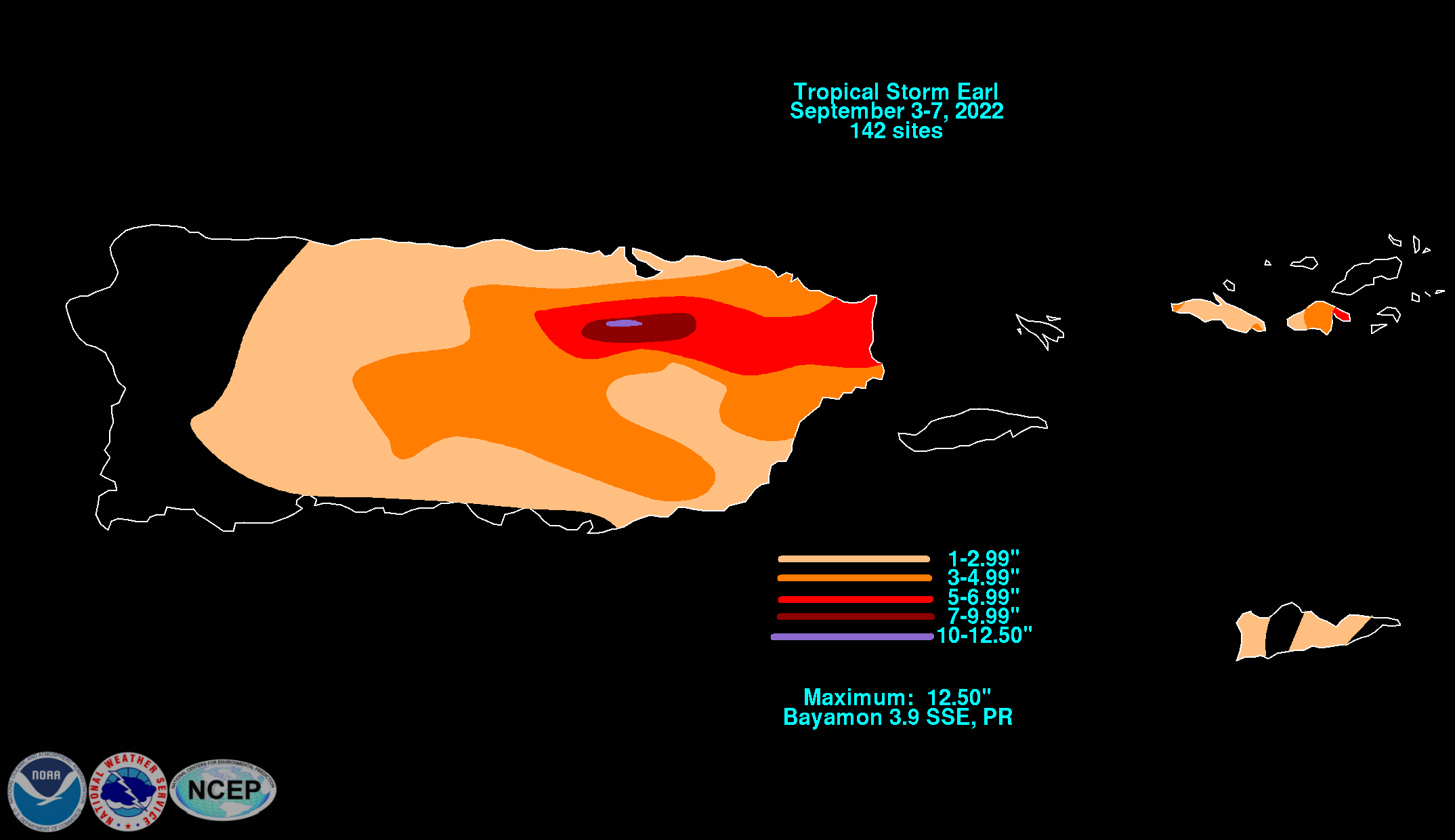 |
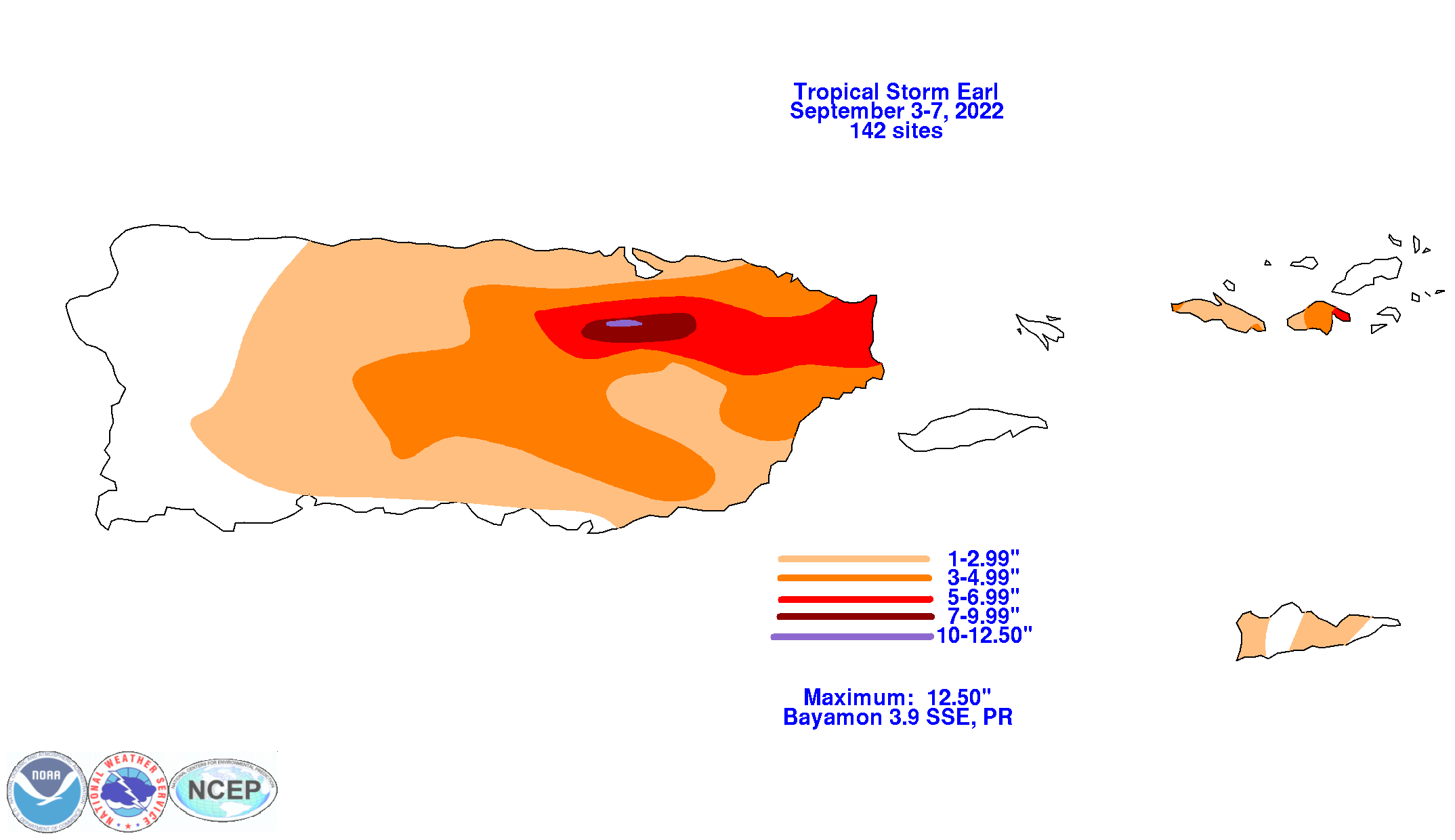 |
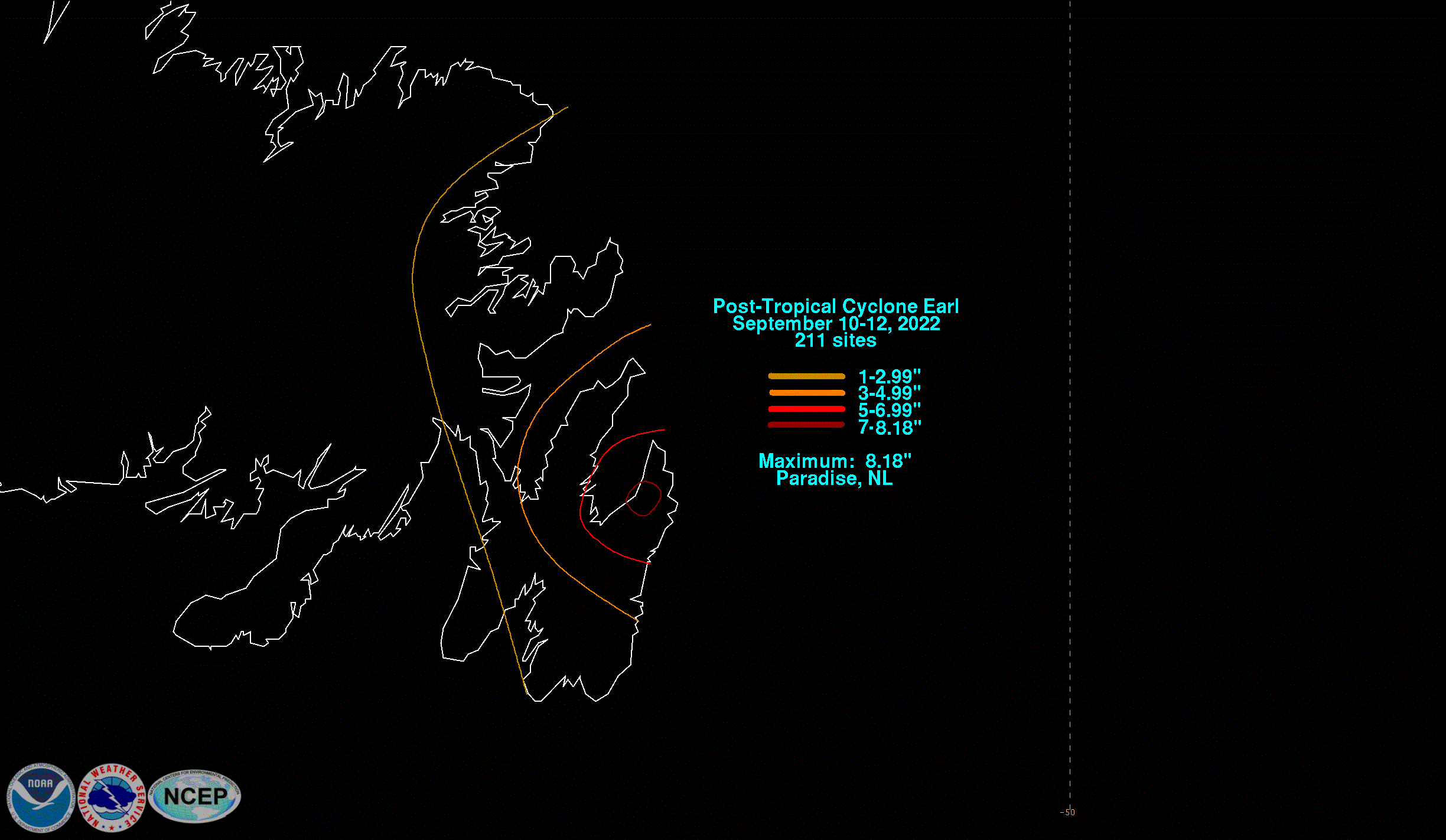 |
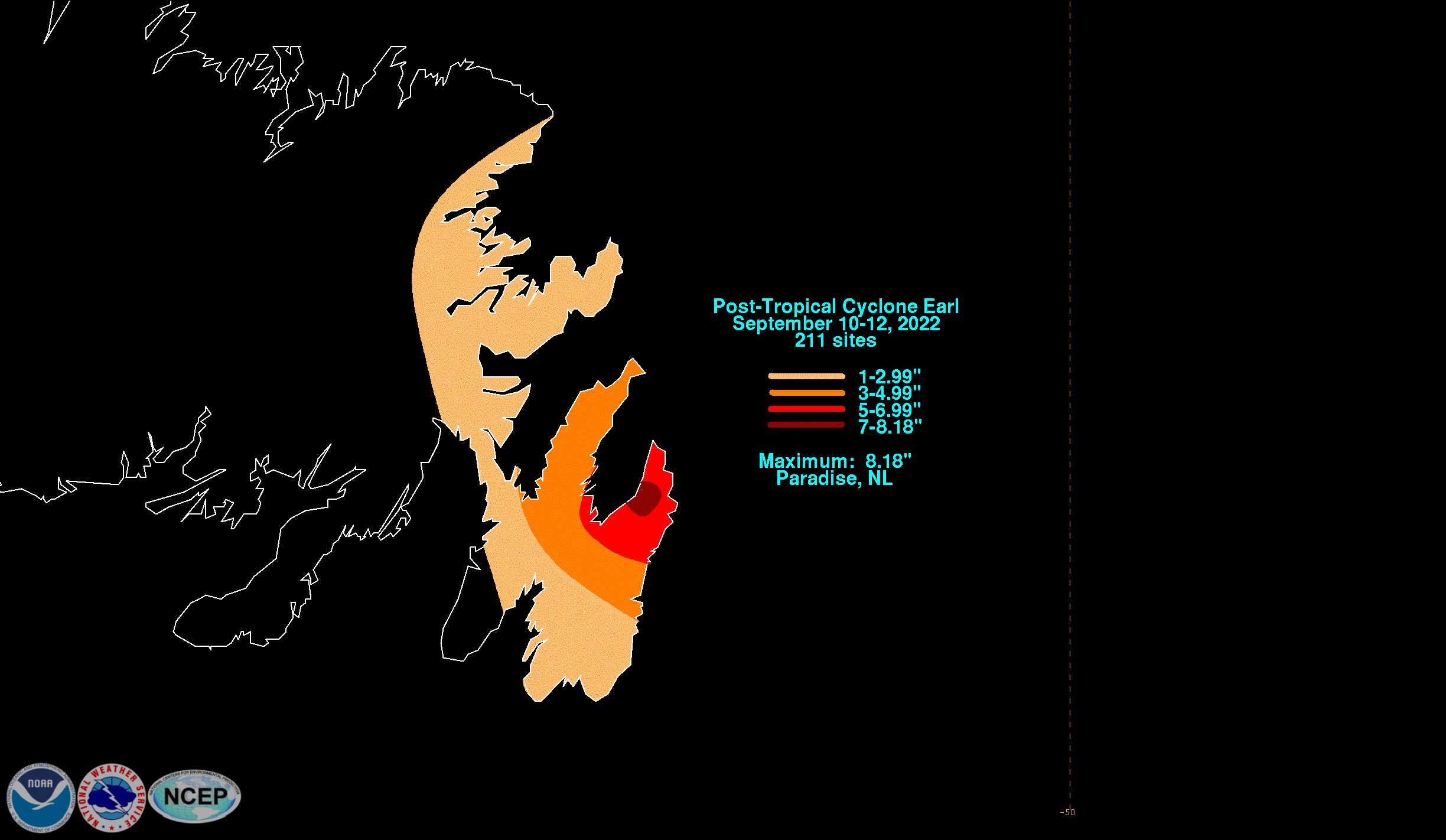 |
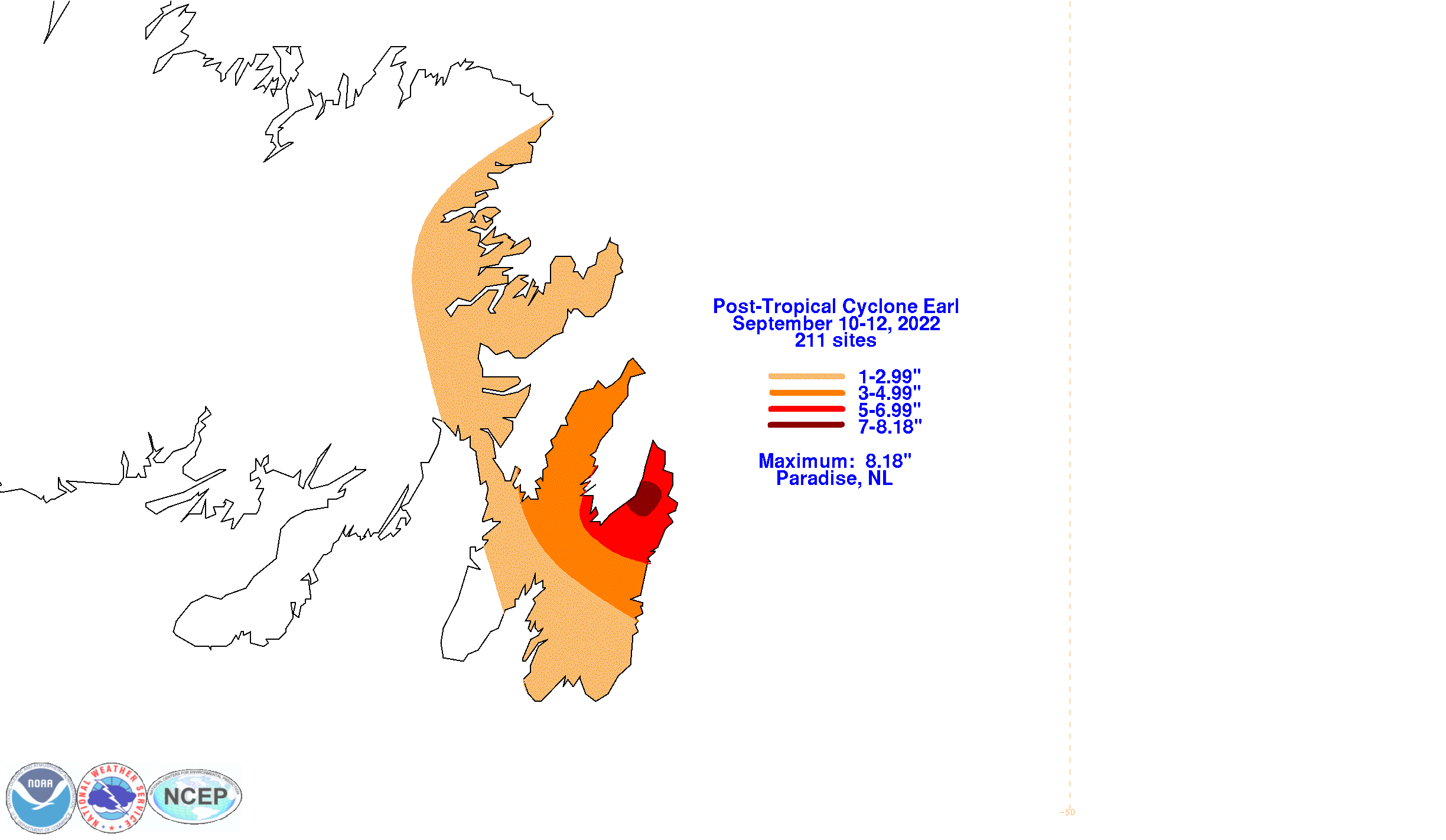 |